The Mausoleum of Augustus, one of the most significant ruins of ancient Rome, has long been a dank and forlorn space, accessible only by special permit and rather hard to read from the street. Hiding in plain sight, it was covered in vegetation and often obscured by fencing. So genuine delight greeted the news, long awaited and often promised, that it finally reopened to the public at the start of this month.
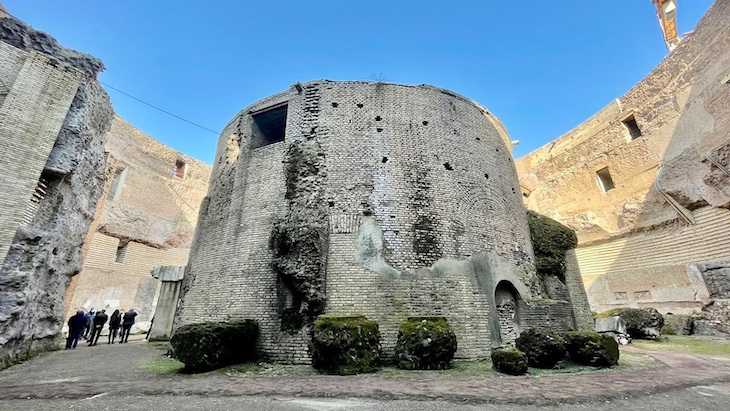
The Mausoleum of Augustus. Courtesy Fondazione Tim
It was built to house the remains of Rome’s first emperor, Augustus, who claimed that he was the first among equals, a restorer in some sense of the Republic that had been shattered by civil wars. On two bronze pillars outside his enormous mausoleum, in the Field of Mars to the north of central Rome, Augustus inscribed a long record of his achievements, including the claim that in 27 BC ‘when I was by universal consent in absolute control of affairs, I transferred the state from my own control to the will of the Senate and the Roman people […] After that time I took precedence over all others in rank, but of power I possessed no more than those who were my colleagues in any magistracy’.
This was a convenient pretence: Augustus continued to rule with absolute personal authority, as some of his building projects showed. His mausoleum was begun at around the time that Augustus modestly claimed to be handing back power to the senate and people. This round tomb, its 90m diameter topped with a rising mound crowned with cypress trees and a bronze statue of Augustus, waited more than four decades before it finally accommodated the earthly remains of the deified emperor; during that time anyone entering or leaving the city to the north walked past what was clearly a monument to dynastic permanence and a claim to the attention of posterity. Even its ancient name ‘mausoleum’ alludes to the tomb of King Mausolus of Caria, one of the wonders of the ancient world. Its immense size and round shape echoed the tomb of Alexander the Great in Egypt and the resting places of Etruscan kings. There is nothing modest, or republican, about it.
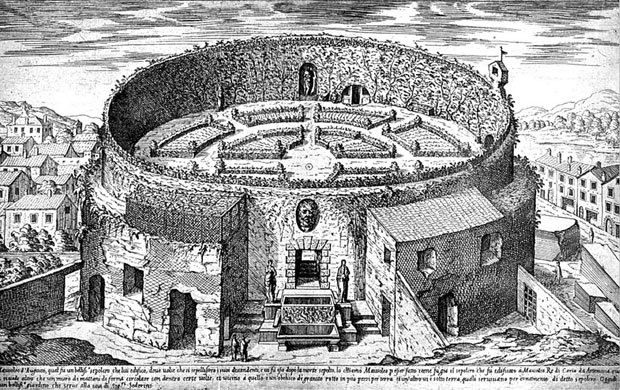
Engraving of the Mausoleum of Augustus (1575), Étienne Dupérac
As one might expect, the tomb was built to last. At this time Roman architects and engineers were increasingly using concrete as a cheap, sturdy core material over which a decorative veneer could be applied. The facing marbles and bronzes have long since been prised off, but the hulking and practically indestructible concrete remains of the mausoleum’s core have had a long and varied afterlife. It was supposedly sacked by Alaric’s Gothic invaders in 410 AD, and then abandoned. The medieval Colonna family turned it into a fortress (its counterpart over the river, the tomb of the later emperor Hadrian, became the papal Castel Sant’Angelo). Later, as the Campus Martius rediscovered its identity as a pleasure ground, the round interior of the mausoleum was repurposed as a garden, a bullfighting arena and, by the early 20th century, a concert hall. The additions and alterations of 20 centuries were then stripped away in 1936 by Mussolini, whose grim fascination with Augustus inspired a stolid new urban quarter around the remaining ancient core of the tomb, as well as a huge copy of the inscription and a glass pavilion for the Augustan marble Altar of Peace. These alterations left the mausoleum itself rather isolated, sitting below ground level in a space that was eventually fenced off and left to weeds and litter.
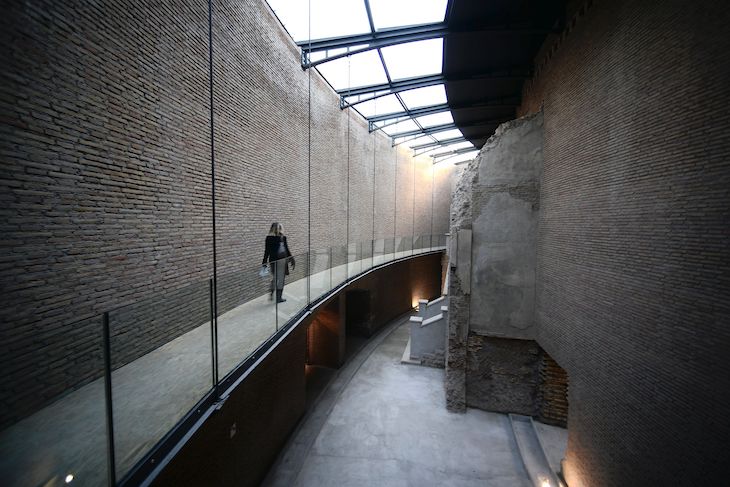
Inside the Mausoleum of Augustus. Photo: Filippo Monteforte/AFP via Getty Images
The Mausoleum has now undergone a two-part restoration process, funded by Fondazione Tim, Telecom Italia’s charitable foundation. The complex remains of the structure have been cleared and stabilised over the past five years, and an accessible visitor itinerary, covering the varied history of the building, has been installed in its interior spaces. Naturally, current restrictions mean that it is once again off-limits for the time being; even once it does reopen, it will likely be some time before those of us not in Italy are able to visit. This and the rather complex history of the building mean that good visualisations of the structure over the ages are an essential part of its address to the public. Imagination is required to see anything like the original structure in what remains, let alone the centuries of overbuilding that have ebbed and flowed around it. Modern technology makes this possible, and the re-opened Mausoleum is now the subject of an extensive website.
This contains information about the history of the building and its current restoration, timelines, background on Augustus and his times, and an ‘interactive experience’. The latter presents a series of ‘chapters’ in English and Italian, covering Augustus, his plans for his tomb, its location in the Campus Martius, Roman imperial culture and architecture, and the various later phases of the building’s history. Each chapter contains a series of clickable topics orbiting round a monochrome 3D model, which in turn bring up a side bar showing a short explanatory text and useful images.
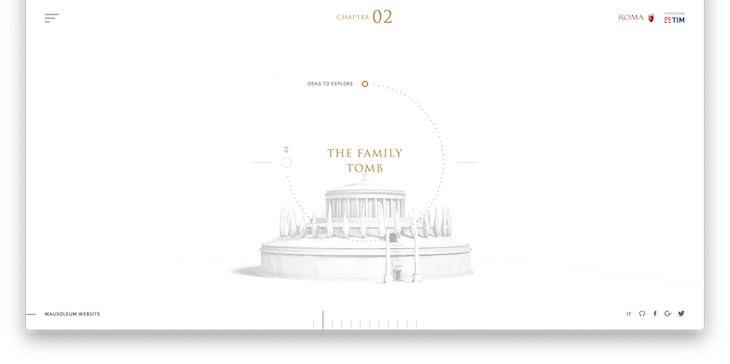
Screenshot courtesy Fondazione TIM
Like many visitor ‘experiences’, this one wants to conduct you along a route of its choosing, following sequentially numbered chronological chapters and sub-headings; you can’t easily play around separately with the 3D models of the mausoleum as built or as arena or gardens, which might have been a fun way of exploring, though you can orbit around these as routes into their respective pages. There is a great deal of useful information here and some fine archive images which make the very complex history of the site easier to understand. For reading up in advance of a visit or after one – or even as a Covid-compliant alternative, or a classroom resource – this is a fine collection of information.
The website for the newly opened site promises a virtual and augmented reality visitor experience, in which colourful 3D reconstruction models of the restored building appear on a handheld device or an immersive headset. Access to the site is limited, however, to 50-minute slots for 10 people at a time (already sold out until July). If it is comparable to other VR and AR site presentations in Rome, which I wrote about for Apollo in 2019, this will be visually spectacular. The trailer video promises a vivid transformation of the surviving remains into an approximation of the original building, but if visitors are on a set route and a schedule, visits may offer limited scope for personal in-depth exploration. The rich content on the website is therefore a very welcome addition, and a good example of how an ancient site can be presented online to complement a time-limited visit in person.
For more information on the Mausoleum of Augustus, visit www.mausoleodiaugusto.it.
Unlimited access from just $16 every 3 months
Subscribe to get unlimited and exclusive access to the top art stories, interviews and exhibition reviews.

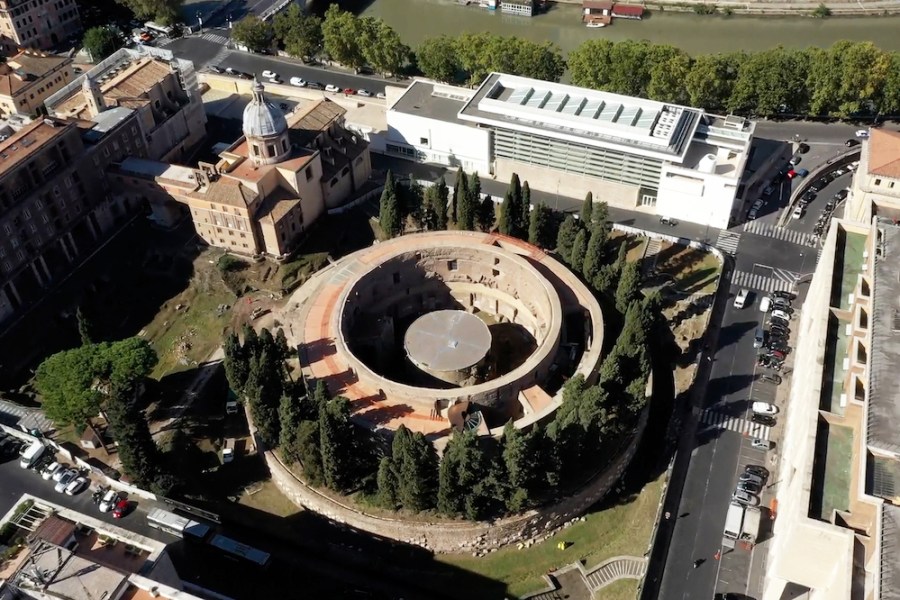
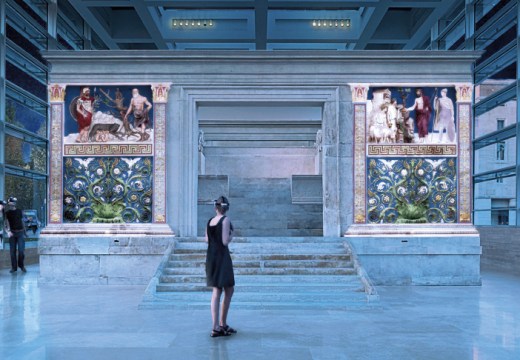
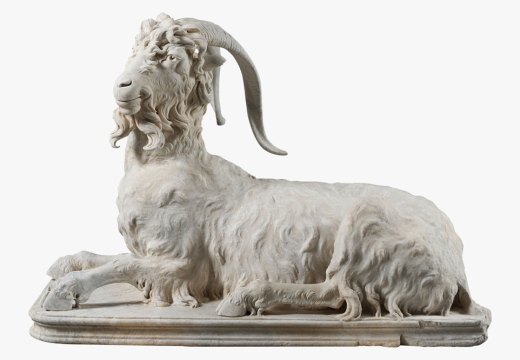
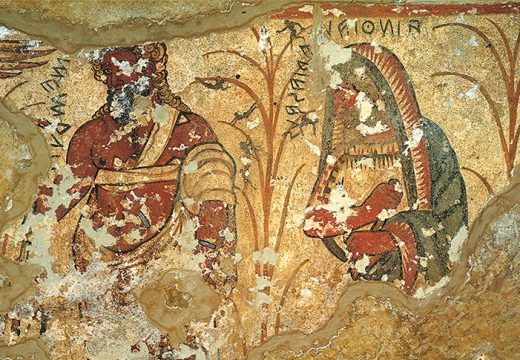









![Masterpiece [Re]discovery 2022. Photo: Ben Fisher Photography, courtesy of Masterpiece London](http://www.apollo-magazine.com/wp-content/uploads/2022/07/MPL2022_4263.jpg)
It’s time for the government of London to return to its rightful home